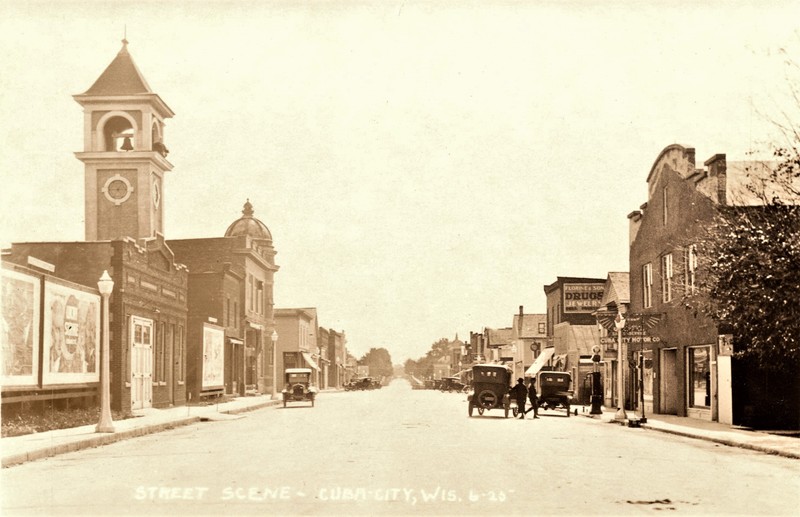Ford Garage & Auditorium
Introduction
Text-to-speech Audio
Completed in 1915 by Cuba City builder R. F. Conlon, this reinforced concrete building served as a Ford dealership and automotive repair shop, as well as an entertainment venue and community gathering space for decades. The structure was briefly owned by brothers, John and Edwin Heim. The Loeffelholz Brothers (George and Charles) and John B. Wagner, took over ownership a few years later, followed by the Cuba City Motor Company. The building has since been converted into apartments.
Images
The Loeffelholz Bros. Ford Garage and Auditorium, circa 1917-1920.
.jpg)
Cuba City's Main Street in 1925, with the Ford garage and Auditorium on the right.

Backstory and Context
Text-to-speech Audio
When the Heim Bros. commissioned the garage and auditorium, it was built with a gable roof. A decorative parapet, still intact today, was added in 1920.
The building's street level served as the Ford dealership and repair garage, and the upper level, known for years as the Auditorium, was originally a venue for motion pictures, dances, and live performances. The space had a smooth maple floor, stage, dressing rooms, and a portable motion picture projector.
Before a new gymnasium was built beside the Cuba City High School in 1936-1937, the Auditorium served that purpose, as well. Many basketball games were played in the venue, which presented problems as a basketball court, thanks to three metal roof trusses above the floor—one at the center line and one above each free-throw line.
After World War II, the stage and dressing rooms were removed from the Auditorium and a roller skating rink was installed.
Sources
Bartlett, Charles H. Cuba City Memories. 1970.
Goldthorpe, W. H. Cuba City News-Herald. July 9, 1920.
O'Neill, Edward. Cuba City Centennial. Cuba City, Wis., 1975.
Wisconsin Historical Society. "109 N. Main St., Wisconsin Architecture and History Inventory." Accessed May 30, 2022. https://www.wisconsinhistory.org/Records/Property/HI44298.
Cuba City Centennial history
